Wayne C. Allen's Blog, page 28
March 17, 2017
Compassionate Acceptance
Synopsis: Compassionate Acceptance–we are as we are; our cores are fixed. If we notice and stay present, we can accept ourselves and others, and act from there
The book closest to today’s topic is Wayne’s, This Endless Moment 2nd. edition
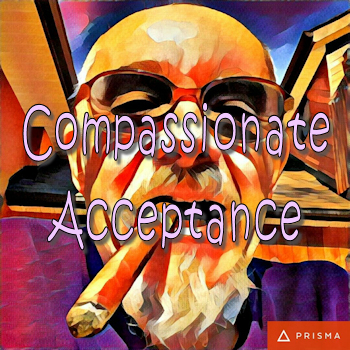
Compassionate Acceptance
I wrote about this incident back in November: but back when Trump got elected, I had a pretty strong reaction to a careless line uttered by an acquaintance in an e-mail. I set myself off over it, fired off a (pretty tame) reply, and then gave myself a shake.
I later thought about a few things:
in my 20s, I’d have gotten really angry at him and probably confronted him.
in my 30’s, I’d have been annoyed at his disturbing me, and I’d have tried to fix him.
in my 40’s, I’d have acknowledged that I was upsetting myself over his behaviour, and would have worked at getting myself under control.
in my 50s, I’d have gone to the meditation room and had me a good “sit,” processing the feelings through quiet observation.
now, I’m simply aware of my annoyance. I override it by acknowledging that his timing sucked, but not worth getting upset about.
I want to go over these reactions one more time, stating them in another way:
in my 20s, I was an arrogant black and white thinker. I thought I existed in a world where there were some really annoying, stupid, crazy people. I also thought they confused me, made me angry, pissed me off, drove me crazy—and the only thing I could do about it was to fight back and make them stop ruining my life.
in my 30s, some people were still as above, but I’d learned that “good” people bite back their feelings of being hard done by in order to carve out space enough to manipulate others into behaving themselves. I thought that all I had to do was to come up with the right “cure” and those annoying people would stop annoying me.
in my 40s, some people were still as above, and I’d learned that they are as they are, and that I am not their victim. I am not made to (forced to) feel anything. I hear and see what is going on, and I choose how I react to it. I learned to successfully fight my nature as a judgmental fixer, almost all the time.
In my 50’s, some people were still as above, and I practiced mediation as one way to deal with “them.” In other words, I accepted responsibility for generating my emotions, but still loved blaming people I judged to be “defective.”
now, some people are still as above, and I am still a person who annoys himself, and regularly. I am no longer fighting so much to be other than I am. Most of the time, I just am as I am, and I smile at myself a lot. As I go from acting on my judgments—about myself and others—to simply noticing where I am in the moment, I find I am hearing and appreciating more of what is happening around me.
Mostly I find I have an inner and outer consistency — an acceptance of the “is-ness” of life.
I once had a client who was fighting with her husband. She came in for therapy, we worked for a few months, and she left feeling better about herself and her marriage. There were no more fights. After six months, she called and booked another appointment. When she got to my office she angrily shouted, “You didn’t fix me! I’m fighting with my husband again! I want my money back!”
We worked it through, after I got up off the floor and stopped laughing. Because, you see, we never fix anything!
The nature of personal development seems to be this:
Initially, our way of being is to look outside of ourselves for both
the cause of our feelings and experiences, and
the cure for our feelings and experiences.
In other words, we have an expectation that it is the goal of others to make us happy.
As time goes by, I may realize that the only one who is interested in my interests is me. This may lead to a sense of loss, isolation and anger.
Or, people shift to the idea that if they were a better person, people would treat them better. They therefore might let up marginally on those around them, and start a rigorous self-criticism project.
This is done by refining the “good / bad” list our parents started for us. This is self-judgment; we decide that we have whole aspects of our personalities that should never see the light of day.
We begin a self-loathing and self-repression project.
As more time goes by, I may realize that I am cut off from whole parts of myself–not because they are bad, nasty, perverted, or weird–but because of past experience and decisions. Again, I must choose. I can simply sadden myself about what I’m missing, (while looking for someone to blame) or I can begin to explore the hidden pieces.
I often speak of this work as uniting the
yin and yang aspects of our selves.
The next step is the one where most falter, and I certainly notice I trip on it regularly. The only way we ever have a hope in hell of moving past this point is to simply and somewhat ruefully accept that the parts of us that we have repressed and judged and blamed for our sadness in the past are parts of us until we die. We cannot ever get rid of these thoughts, urges, feelings and emotions. All we can do is come to terms with them.
This means acceptance.
Acceptance (I’m OK with) and acknowledgement (I own that this is me) are almost the same thing. The gist of it is that when I trigger myself over something or someone, I notice that I have triggered an “old” piece, I have a breath, and I choose a different direction as far as my behaviour goes.
Far from being complicated, this way of seeing and being is almost too simple. I exist as I am. I cannot do away with parts of myself that don’t work or I don’t like. All I can do is choose not to enact them. I do this by staying present.
OK, that’s the tricky part. When something old and troublesome in us is triggered, our instinct is to follow it backwards into the past, and to push it into the future.
We look for persons or situations to blame.
We blame ourselves for not getting over this “thing.”
As we do this, we lose the only real
context we have—the present moment.
Far better, I think, to simply be aware of the passing of the moment. As I become aware of both others and myself, and see the dance and interplay, I realize that aspects of myself arise and go, and if I do not attach myself to the story my “parts” want to tell (in my head), I can let them pass gently, while never losing contact with the moment or the context.
This is not easy.
Life is like this: with each transaction, with each word, with each turn of the cards, you can come to acceptance of the whole of you—all the richness, the goodness and badness, the horniness and the boredom, the intelligence and the dumbness, all of it—then you will find that life is still a challenge, but not as much of an effort.
Life is, and you are, exactly and precisely as you appear. The whole of you is you, even the weird parts.
Good hunting and accepting.
The post Compassionate Acceptance appeared first on The Pathless Path.
Original article: Compassionate Acceptance.
March 13, 2017
Zen and Emotional Balance
This is post 7 of 7 in the series “Zen Living and Being”
Zen and Emotional Balance–there’s nothing “Zen” about blocking emotions. In fact, Zen is all about being real, which means being elegant–including with your emotional expression.
Of Wayne’s many books, the one closest to today’s topic is: Half Asleep in the Buddha Hall
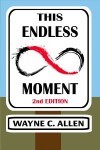 Click image for more info!
Click image for more info!The 2nd. edition of This Endless Moment is now available from Amazon.
The new version has 100 plus more pages of insights and helps.
You’ll discover the resources you need for living a centered, fulfilled, and aware life.
The paperback version is here:This Endless Moment 2nd. edition
The kindle version is here:This Endless Moment 2nd. edition
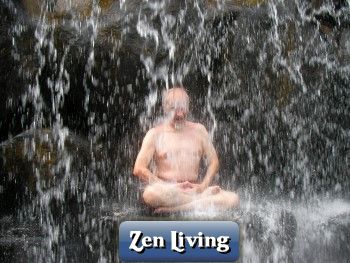 Zen and Emotional Balance
Zen and Emotional BalanceLet’s talk about Emotional Balance, shall we?
We can make a few universal assertions about emotions:
we all have them,
we all hurt ourselves if we do not express them, and
we all hurt ourselves and deepen the mess we are in if we express our emotions in a non-helpful way.
If you’ve been reading The Pathless Path for a while, you’ll know that we’re heavily into balance. Zen also prizes balance, in the sense of being present with our process.
While many people equate balance with “neutral,” and therefore with “lukewarm-ness,” we think that a life well lived is more like the story of Goldilocks and the Three Bears.
Too hot, too cold, just right!
Let’s pretend that Goldilocks is today’s guru, and look at emotions from the perspective of her three categories.

Too hot: Rather than get into a big head trip about how we generate emotions, let’s just say that they “arise.”
We must also accept that emotions are all ours. What I mean is that others (or externals) do not cause us to have emotions. Emotions arise as we participate in life, and are completely and totally self-generated.
Too hot emotions are emotions that spill all over the place, and are usually container-ed in blame. Or perhaps better put, too hot emotions are delivered in the context of blame, while justifying the delivery through powerlessness.
We hear,
“It’s all your fault I am so angry, and there’s nothing I can do about my anger, because this is what I learned from my parents.”
or,
“I am so unhappy that you won’t do what I want you to, so I’m going to find a way to punish you for what I imaging you have done.”
Blah, blah, blah.
The problem with too hot emotion is that they burn everyone. They are never justified, but man are they popular! Hotly expressed emotions, like a pile of manure in the living room, are pretty hard to ignore, and need shovelling before life can return to normal.

Too cold: Too cold emotions are repressed emotions. There is a tightness about repression, and especially when emotions are stuffed over time. There is a biting off of the emotions, and thus a tight jaw. There is a disengaged quality to the person’s approach to life.
While people think there is something noble and restrained about repressing emotions, the result is internal turmoil, and often, illness.
Included in this is passive aggressiveness–acting as it nothing is wrong, but using the silence and coldness as a bludgeon to get others to cooperate. Common, but not helpful.

Just Right: It’s funny how few people reach a balance point in areas of their lives, and especially as it has to do with emotions. Most are stuck at either of the above poles, and rapidly swinging between the two.
The balance point, the “just right point,” is this:
I choose to safely and cleanly express my emotions without aiming them at anyone or anything. I say what I need to say, at the right volume, using “I” language, and making it clear that I am accepting responsibility for my beliefs, my emotions and my reactions.
This, of course, is a tricky walk, as no one prepares us for it.
Indeed, our society sells us either or both of the other two positions. It’s also tricky because it requires that I stay “simply present,” and aware of my self all the time (which is how one balances anything, including life.) With no one and nothing to blame, including myself, I am simply responsible for my life, my fate and my direction.
Now, oddly and paradoxically, the more you practice this Zen-based middle way, the less you will find yourself needing to engage in emotional dumping. You’ll find that not many emotions are worth the time and energy needed to express them. You’ll notice them building, coming forward, receding and passing. Like clouds.
This differs entirely from “too cold.” Too cold is a forcible repression of the emotions. “Just noticing” is letting what happens, happen. It is seeing everything and attaching to none of it. Or, as a modern Taoist might think, (cf. Stewart Wilde) “The way it is, is the way it is.”
This week, notice your approach to your emotional life. Too hot? Too cold? Too much of both?
Re-imagine your life as “just right.” Hmm.
What a concept.
The post Zen and Emotional Balance appeared first on The Pathless Path.
Original article: Zen and Emotional Balance.
March 1, 2017
Zen and Simple Presence
This is post 6 of 6 in the series “Zen Living and Being”
Synopsis: Zen and Simple Presence — waking up is not all that hard to do, but it does require paying attention, which many find… hard to do! What is simple isn’t so simple.
Of Wayne’s many books, the one closest to today’s topic is: Half Asleep in the Buddha Hall
 Click image for more info!
Click image for more info!The 2nd. edition of This Endless Moment is now available from Amazon.
The new version has 100 plus more pages of insights and helps.
You’ll discover the resources you need for living a centered, fulfilled, and aware life.
The paperback version is here:This Endless Moment 2nd. edition
The kindle version is here:This Endless Moment 2nd. edition
 Zen and Simple Presence
Zen and Simple Presence Simple Presence
Simple PresencePerhaps one of the hardest things to “get” about present and focused living is the mechanics of how it all works. This topic is so important that I wrote a book about it.
Half Asleep in the Buddha Hall uses Zen stories as starters for each of the chapters. Here’s an example:
A guy named Harry is on a quest for enlightenment.
He tries everything. He goes to school. Nada.
He becomes a life coach. More nada.
He worships in the local shrine-of-choice. Mucho nada.
Desperate, he decides to climb a mountain in Nepal,
to visit His Holiness, Rama Dama Ding Dong.
It is an arduous trip. (Aren’t they always?)
Finally, near death, he collapses on the ground
near a steep path.
He looks up, and sees an old man walking down the path,
carrying a big bundle of firewood on his back.
Harry says, “I’m looking for Rama.”
“I am he,” replies the guru.
“Oh, thank god!” Harry says. “I’ve been searching for so long. Please, tell me, what is ‘waking up’?”
The guru takes off the bundle of wood, sighs deeply, and smiles.
In that instant, Harry woke up.
Then Harry’s mind got involved.
He asked, “Please, pardon another question,
but what do you do after ‘waking up’?”
Rama picks up the bundle, places it on his back,
and continues down the hill.
The problem with Zen, simple presence and “the path” is that it is entirely too simple. It boils down to this:
One step, and one step,
and one step, until you die.
The ease, the simplicity… it’s actually a matter of non-complicating things. Because dealing with things in a non complex way leads to… peace, clarity, and no little amusement. It’s my friend, in the photo above, dangling her shoe.
The process is simple, if you let it be simple. Simple presence allows us to experience life moment-by-moment. This is emphatically not what most people do. Most people, by getting caught in a “thought loop,” quickly drop out of “the now.”
Let me illustrate… and this is something I cover in my recently revised book, This Endless Moment): The things that occur in our lives are simple events, phenomenon, or stimuli. (You pick a name.) They are essentially meaningless (meaning that they lack intrinsic meaning.)
Now, you may want to rush in and say, “Hey! Stuff has meaning!” And you would be right. It just doesn’t mean anything in its essential nature. In other words, everything, including us, derives meaning from a human being.
Each and every thing means what the person (each person) makes it to mean.
This is the process of interpretation, or judgement. We all make them, all of the time. There is absolutely nothing wrong with our judgement process. In a sense, we’d be dead without it. It is, after all, what tells us not to pick up the glowing fireplace poker.
A Zen teacher, Adyashanti, used this illustration (which I’m paraphrasing)
“A poisonous snake crawls up a man’s arm. The non-present person thinks,
“Oh. My God! A snake. I wonder if it will bite me. What should I do?” The snake bites him and he dies.
The awake, aware, and ‘present’ person simply flicks off the snake.”
Where the problems come is when a judgement occurs… and instead of simple action, we, (like the snake bitten man,) stop, lose presence and go into our heads to universalize and awfulize.
It’s “It will always be like this. This is a terrible situation, and terrible situations always happen to me. Why can’t I ever meet the right man? Why do bad things keep happening? I must be a bad person. No, I’m surrounded by bad people. Why do I attract bad people?”
Snake bit. Dead.
All of that internal chatter happens, and then we might anger ourselves or scare ourselves over the story we invented. This leads us to either attack or run away.
In order to do this, I have to go into my head, away from the present moment, and start chewing on the data. In the mean time, of course, the world has moved on, and the data might no longer be relevant.
I receive a stimulus, I interpret it, I may also notice simultaneous emotions. In that moment, I have two choices,
I can say, “Hmm. Here’s what appears to be up for me. I will act (speak, not act, report, share) in this way, thus staying present.”
I can immediately go non-present, and start playing back awfulized stories, which add to my personal drama. This only accomplishes confusion, mis-direction and inaction (or wrong action.)
See? I said it was simple.
Now, a lot of “special” people out there are going to argue with me, based upon their thinking that I do not understand their “special” circumstances, background, DNA, situation, partner… whatever. But you see, all of that is irrelevant.
All there is, are the circumstances in front of you, and your choice. It’s not about anything, it doesn’t mean anything, and no one else can do anything to change your internal representation, or change what you are about to do, or not do.
Rama Dama Ding Dong did not bemoan picking up the wood. He didn’t complain about his sore back. He didn’t blame his parents for not being rich so someone else could carry the wood for him. He didn’t blame his wife for not using the communication model.
He picked up the wood and walked.
Being present is this. I will always judge and evaluate. This is the way it is. The purpose of judgment is to go: “Snake!”
And then brush the snake off.
Being Present is this. My actions are consistent with my walk. I act clearly and cleanly, without blame or drama. There is nothing I have to do or learn before I can act with simple presence. Simple presence is a here and now focus, choice and perception.
I know many people who begin this path, and then scare themselves with the intensity of the experience and take a year or a lifetime off. Therefore, remember: all you have is now, and this walk requires one thing – walking.
The post Zen and Simple Presence appeared first on The Pathless Path.
Original article: Zen and Simple Presence.
February 23, 2017
Zen and Karma
This is post 5 of 5 in the series “Zen Living and Being”
Synopsis: Zen and Karma — karma is not a system of rewards and punishments, or even a “what goes around comes around” philosophy. It’s a statement that all things are interrelated, and results have causes.
Of Wayne’s many books, the one closest to today’s topic is: Half Asleep in the Buddha Hall
 Click image for more info!
Click image for more info!The 2nd. edition of This Endless Moment is now available from Amazon.
The new version has 100 plus more pages of insights and helps.
You’ll discover the resources you need for living a centered, fulfilled, and aware life.
The paperback version is here:This Endless Moment 2nd. edition
The kindle version is here:This Endless Moment 2nd. edition
 Zen and Karma
Zen and KarmaI was reading a book by OSHO book called Body Mind Balancing. OSHO describes our “disconnect” from our bodies; needless to say, a topic of some interest to me.
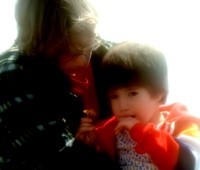 Karma and conditioning
Karma and conditioningHe wrote that we are conditioned, as infants, to be miserable and needy. Indeed, he argues that the opposite, bliss or happiness, is looked upon, at the least, with suspicion. He wrote that pleasant, placid, happy babies often get less attention than a baby that is squalling, squealing, and constantly complaining.
He thought that this predisposes kids to think that misery is the key to getting attention. (I have to say it: think Trump! His entire campaign is based upon just such a whiny, picked-upon position.)
As you walk down the street, you are much more likely to see bland, blank, or scowling faces – and you likely think this is normal. Seeing someone walking toward you smiling and laughing to himself seems, well, threatening or perverse.
Let’s just agree that we are predisposed to looking on the gloomy side of things – to looking for what is wrong – either with externals (“My diaper pin is poking me!”) or internals (“I’m hungry. I’m thirsty. I’m bored. Fix me! Fix me!”)
And then, folk get into a relationship… and each demands the other person’s attention and deference. Of course. It boils down to this: the two children can’t get along.
One of the main things to “get” is that we create every aspect of our own reality, and I mean every aspect. Another way to say this is to look at the concept of karma.
“In Buddhist teaching, the law of karma, says only this: ‘for every event that occurs, there will follow another event whose existence was caused by the first, and this second event will be pleasant or unpleasant depending upon whether its cause was skillful or unskillful.’ A skillful event is one that is not accompanied by craving, resistance or delusions; an unskillful event is one that is accompanied by any one of those things. (Events are not skillful in themselves, but are so called only by virtue of the mental events that occur with them.)”
Therefore, the law of Karma teaches that responsibility for unskillful actions is born by the person who commits them. link
Now, the normal description of karma typically includes the idea of past lives, as in, “I must have done something really bad in my past life to deserve this.” I’d like you to put that aspect aside, as this is not even close to the actual intent of the word. It’s just a complication, and the last thing you need is some other distraction to keep you stuck.
Karma is not a punishment. It’s simply an explanation of cause and effect.
What this means is that you are (we all are) a closed system. What goes on inside of you is “all you, all the time.” For example, no one makes you angry — a situation occurs, and you either anger yourself, or you do not. This is why one person has one reaction and another person has another reaction, when dealing with the same situation.
The feelings that arise are neutral. If you simply watch the feeling, it dissipates, (a reason to meditate). If you label and judge the feeling, then, as we discussed last week, you begin to cling.
To what? To your story. For example, if you think people are out to get you, you’ll add a “victim” story to the feeling, and blame someone or something.
And even this is not Karma.
If, then, you decide to tell off the other person, or pull a sob story, or whatever, now you’re generating Karma. Because what you do generates a reaction or response. Your action led to a reaction (even the reaction of ‘no reaction,’) and your Karma is to deal with what you have created.
As an exercise, I want you to stop, right now, and think about all aspects of your life, including:
Money or debt
Job or vocation
Relationship(s)
How you view your sex life
View of yourself (self-image)
Your main daily focus (is it positive or negative)
How’d you do? How are you feeling about yourself, your life, and your relationships?
Now, here’s the karma piece:
Every single aspect of everything you just thought about is a direct result of your decisions, choices, and “paths chosen.”
Not part of it, not most of it,
but every single bit of it.
Of course it’s human nature to want to find something, anything, anyone, to blame for who and where you are.
But in order to move on, to finally reach a point of purposeful peace and contentment, you have to accept total responsibility for every aspect of your life: You caused it, you set it in motion, and you made it happen. If you will not accept this reality, you will remain a perpetual victim.
Your life is exactly and precisely what you made it and make it to be.
Where you are right now is the result of your past choices, and your present mood and temperament have a lot to do with where your head has been for (about) the last year. In other words, today was set in motion by you last year! And because you are so good at imagining and planning out imaginary scenarios, you unconsciously committed to where you are right now, and have denied any evidence to the contrary of what you believed and set in motion.
The way out begins, of course, today — how you think and what you tell yourself, today and from now on.
If you want a different life a year from now, you must begin right now. And you must put as much energy into what you want (the new path) as you have put into what you believed and did in the past. No excuses.
Now, be clear here. I am not suggesting that you substitute blaming yourself for blaming everyone else.
Blaming is not an action, it’s an addiction! The key is to accept that you are who you are as a product of your choices, and to simply move on by acting differently. No blame, just self-responsibility.
When Darbella and I led training events, we always started by playing The Eagles “Get Over It.” Here’s the last verse:
It’s like going to confession every time I hear you speak
You’re makin’ the most of your losin’ streak
Some call it sick, but I call it weak
You drag it around like a ball and chain
You wallow in the guilt; you wallow in the pain
You wave it like a flag, you wear it like a crown
Got your mind in the gutter, bringin’ everybody down
Complain about the present and blame it on the past
I’d like to find your inner child and kick it’s little ass.
The time is now, and now is when we make things new again. If you don’t like where you are, change your karma. In this moment. No blame. No excuses.
The post Zen and Karma appeared first on The Pathless Path.
Original article: Zen and Karma.
February 15, 2017
Zen and Clinging
This is post 4 of 4 in the series “Zen Living and Being”
Synopsis: Zen and Clinging — Clinging is what causes suffering, or so said the Buddha. This idea is not so hard to understand, until we are… well… suffering. Then, we just want it to be over. And that’s how we go off the rails.
Of Wayne’s many books, the one closest to today’s topic is: Half Asleep in the Buddha Hall
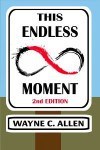 Click image for more info!
Click image for more info!The 2nd. edition of This Endless Moment is now available from Amazon.
The new version has 100 plus more pages of insights and helps.
You’ll discover the resources you need for living a centered, fulfilled, and aware life.
The paperback version is here:This Endless Moment 2nd. edition
The kindle version is here:This Endless Moment 2nd. edition
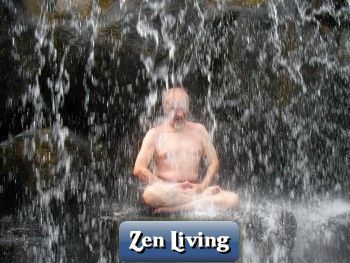 Zen and Clinging
Zen and ClingingMost people are plagued with clinging. They are looking for the perfect partner. They are looking of the perfect life, the perfect career, the perfect mind-set.
They say that they want to be happy — as if there is a permanent state called happiness that someone, with effort, could cling to, all the time, despite the reality that all of life is change.
Zen attempts to loosen our fingers from the death-grip we have on the object(s) of our desire, so that we can accept the final paradox of our desire – you can never hold on to anything, including our illusions.
I had a comment from last week’s article (hey, Beth!) and just like magic, it fit with the next article in this little series. Rather than make you flip back to the comment, here it is:
I just read this and your previous 2 posts. I’m filtering things these days through physical pain, illness, and general bodily discomfort. Seems all I can do with this right now is say “OK” and not have much reaction. I do know I look forward to the time when I can travel again, carry on with my recently-past “normal” activities of daily life, and be through this place where all I can do is cope with minimal survival tasks from day to day. I don’t like this place. There seems to be little I can do to hasten my journey through it. So, enduring seems to be the order of the day.
I like enjoying my life, and don’t have a whole lot of that right now. Being present in my current reality is anywhere from tolerable to just-plain-sucks, and THAT seems pretty real. I don’t know of a way to change that.
OK, so this is a description of one of the challenges I mentioned in the opening paragraph — that my desire should trump my reality.
Many of us are quite capable of being present — when all is well and the creek ain’t rising. Difficulties happen when we face a reality that differs from what we imagine we want. It’s like the old joke, where the 8-year-old speaks for the first time: “Mom! The toaster is on fire!” Mom’s amazed: “Why has it take you so long to speak?” Kid: Everything was alright until now.”
Zen, too, seems kinda easy, right up until something goes wrong: illness, death, someone leaves you, catastrophe, conflict, Trump. Then, it’s: “This is not satisfactory! I want this to be over!” And right then, right there, suffering begins. (As opposed to pain.)
Which reminds me a a concept from a woman named Helen Dearman. She ran a blog called Pain Tamers, and she interviewed me on her blog about dealing with pain. She’d had a ton of back surgeries. When her doctors asked her about her pain levels, she’d say, “My pain is 7 today. Would you like to also know my suffering number?”
Because the two are completely different animals.
Let’s start by having a look at desire, shall we?
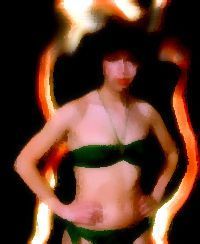 The fire of desire
The fire of desireThere’s a book by Mark Epstein called Open to Desire. Epstein is a Buddhist psychotherapist, and was a student of Ram Dass. Obviously, the subject of the book is desire, and how Buddhism has a bit of a split personality about it. We do too, of course.
Desire, like sex, makes many people uncomfortable. We like it that things can and do “turn us on,” but we also realize that turn-ons by definition have “power over us.” And turn-ons mean that there are turn-offs; things that we don’t want. They’re still desires, or better, anti-desires.
Epstein describes two paths in Buddhism.
The ‘right hand path’ as that of the ascetic. In this view, all desire leads to trouble (suffering) and the way to deal with it is to repress it, fight it, ignore it, or meditate it to death.
The ‘left-hand path’ is Tantra. In this view, desire becomes the energy for transformation. Desire stands in the gap between what we have and what we want.
There are several things going on here at once, and they’re all contradictory. A paradox! Oh goodie!
First, desire is a function of objectification.
One of the exercises I suggest to clients, (it’s featured in my book, This Endless Moment 2nd. edition) is to go to a Mall or a beach or some place where lots of people are. Sit there and watch the people go by, and notice which people you are attracted to. Just notice. If you do this with your partner, tell him or her what you are learning.
Just below the surface, we all crave, or desire, “others.” Here is the first paradox. In order to desire, I have to create an-other. I create an “object of my desire.” In order to desire, I have to see the object while holding it as a thing.
The paradox is that full-blown desire only happens when I objectify, so as soon as the object becomes a person, as soon as I give the object subjective reality, (I recognize the person) the charge desire to fade.
Second, desire is an internal mental process — the object of your desire is inside of you.
As you take a step back, you realize that there is a gap between what you desire, and the reality of the object him or herself. In other words, the paradox is that you want to possess and hold on to something (the real issue is, as we shall see – clinging…) – but the reality of what you are trying to hold on to has a mind (or a nature) of its own.
Epstein writes:
“But this kind of satisfaction is impossible because the qualities that we project onto the desired object —of permanence, stability or “thingness” —do not really exist… The disparity between the way we perceive things and the way they actually are is at the root of our struggle with desire. Once we learn to make that disparity part of our experience, however, desire can be a teacher rather than an affliction.” [p 69]
The Buddha’s first teaching is called “The Four-fold Path.” This teaching supposedly happened pretty much right after his enlightenment, and discusses his major insight — that desire (or better, clinging to desire) leads to suffering (or unsatisfactoriness.)
The Buddha thought that our propensity for creating suffering was so common that his First Truth was, (as it is typically translated in English) Life is Suffering. Epstein says that the Sanskrit dukkha, (the word usually translated ‘suffering’) actually means something closer to “pervasive unsatisfactoriness.”
An example of dukkha is a potter’s wheel that is off-balance, and therefore continually squeaks.
When you are miserable, isn’t that what life feels like — like something’s not quite right, annoying, irritating, anger-provoking? The actual problem comes when we feel this sense of dukkha, and then blame the experience on persons, places, or things outside of ourselves.
We blame others (or our situation — pain, etc.) for creating the feeling we have inside of us, despite at some level knowing that our feelings are always and exclusively an inside job.
The second Noble Truth: “Clinging (to misplaced desires) causes Suffering.”
The Buddha was a pretty good psychotherapist, and he spent his life describing elements of this dance. What he determined was that desire in and of itself is not an issue. Clinging to the thing we desire is an issue.
In other words, we cling to what we imagine we want, as opposed to being with (desiring) what we have.
We create dukkha when we prefer our imaginings over reality, which is actually how all of this happens.
The place where desire exists, however, is also the place where we can begin to step out of the world of things. As we allow the things we desire to become real, separate and subjective, we can embrace both their separateness and their deeper meaning.
Now, that’s not what we think nor how we normally act. We label everything, and most especially do we judge everything.
Thus, it might be said that all suffering comes from our attachment to what we think someone (or some thing, more precisely) ought to be, as opposed to learning to deepen our love for how “it” actually is.
The same thing happens at the intra-personal level, as we objectify our lives.
This time was better than that time.
This experience is preferable to that experience.
This is a good desire, that is a bad desire.
In each case, I am creating a straw person who is leading a life other than the one I am experiencing, and I cling to my desire for that (unreal) reality.
 Boy, this suffering is a pain…
Boy, this suffering is a pain…Of course, if I am sick, I’d rather not be. I can easily remember all the times I felt ‘better,’ and boy do I desire that “other” feeling. But this simply leads to compounding my pain with my imagined suffering (which was the point made by the pain expert asking her doctors if they were interested in her level of suffering.)
A way to think of this is that pain is inevitable: things we want won’t happen, things we don’t want will, and the bodily reaction is pain. The Buddha patiently explained, however, that suffering is always optional.
Ram Dass used this illustration at a workshop: “Imagine that you have to have burning coal placed on the palm of your hand. This is pain. The question is: will you hold it loosely, (non-clinging) or will you grasp it tightly (suffering) and burn your entire hand?”
Not easy, this, because when we hurt, we want “it” to go away. To change. To be different. And yet, each thing has its own time-frame, and doesn’t care what we want. If we deal with the pain “as it is,” we do not suffer. If we focus on what we aren’t getting, and demand change, at the very least, we are disappointed.
The way though is being passionate about only one thing. This Present Moment.
Passion is the way to open ourselves to encountering the other (person, place, thing, experience) as real. This type of relating is an internal decision to be passionately engaged in an exploration of the gap that exists between myself and that which is other. I also explore the gap between another and my perception of the other.
So, what is the gap, and how does it parallel desire?
The gap is created by the space (and the emotional tension) between what is happening and what I wish would happen. In most cases, this tension creates desire – a longing for ‘what isn’t.’ This desire is either positive — “I want what I don’t have,” or negative — “I don’t want what I do have.”
Now, where most go off the rails is when they freak out over the tension. They endlessly try to make the person or situation – the ‘object’ of their desire – into the image they have in their heads. To state it again — the desire for something other is normal. The demand that “that which is desired” become real simply because I imagine it to be “better” — is clinging — which leads to suffering.
Clinging to one’s demand for the imaginary leads to ‘spending one’s life fighting the gap.’ A desire that one obsesses over leads to misery. If I ‘fixate’ on fulfilling my desire, I will never have a moment’s peace.
The ‘right hand path’ suggests dealing with our propensity to cling by rejecting or renouncing desire.
The left hand path, the way ‘through’ desire, is to accept it, respect it, and use it to work with the gap.
So, what does this look like?
Oddly, it’s as simple as acceptance. I accept that nothing stays the same, that there is always a gap between what is and what I desire, and I use this tension to relax into being comfortable with my discomfort. What is will soon be something else. Obsessing about it changing NOW! simply means I delay the change through clinging.
The best description is this (repeat as a mantra, if you will):
I am who I am, and my discomfort is a part of that. If I observe it as opposed to clinging to it and pretending it’s real (it’s not – it’s a figment of my imagination), the distress will lead me to notice what I am doing, and allow me to step away from doing to simply ‘being in the moment.’
Life is in endless tension. That is the nature of life. The way through the tension is to simply be present with it in a non-grasping way.
Once I see that life is as it is, I can learn to be in my life, as opposed to trying and failing, endlessly, to fix it, either in time, or by making everything over in the way I want it to be.
Once I stop trying to play god, in other words, I can simply be me.
Like I have another choice…
The post Zen and Clinging appeared first on The Pathless Path.
Original article: Zen and Clinging. If you're reading this on another site, let me know...
February 7, 2017
Zen and Being Yourself
This is post 3 of 3 in the series “Zen Living and Being”
Synopsis: zen and being yourself — reality is that which is right in front of us. Descriptions of reality are convenient fictions.
Of Wayne’s many books, the one closest to today’s topic is: Half Asleep in the Buddha Hall
 Click image for more info!
Click image for more info!The 2nd. edition of This Endless Moment is now available from Amazon.
The new version has 100 plus more pages of insights and helps.
You’ll discover the resources you need for living a centered, fulfilled, and aware life.
The paperback version is here:This Endless Moment 2nd. edition
The kindle version is here:This Endless Moment 2nd. edition
 Zen and Being Yourself
Zen and Being Yourself
As long as you are trying to understand reality or you yourself in phenomenal terms it is not possible. When you understand that there is something more than spiritual or material, more than right or wrong, that is reality. That is actually each one of us. To know this is to have renunciation, to be free from ideas of right or wrong, life or death, spiritual or material…That is actually zazen—to go beyond various ideas and just be yourself. p120-121
Not Always So, Shunryu Suzuki
Most of the people I come across are trying (desperately…) to have an experience other than the one they are having.
Which, I suppose, is sort of an authentic thing to want, given that the thing they want to change is something they consider crappy. (On the other hand, the things that are happening to us are happening for a reason — so that we might, just possibly, actually learn something…)
The people wanting a ‘better’ reality also have something else in common.
They think that what they are facing is external, and they spend their time trying to get externals to “change and behave.” Another popular pass-time is to waste one’s life trying to figure out what the “right” thing to do is, or even more fun — “who is right?”
As our quote above says, the path out of this illusion is: “just be yourself.”

Example: I was talking with a friend the other day, and I made a distinction for her. She mentioned that none of her relationships had worked out. I replied that the word relationship is a convenient fiction — that no one, during my 32 years of doing counselling, ever brought a relationship into my office.
What did show up was one or more people, who then tried to tell me about their relationship, sort of as if it were, say, their car.
Now, you may be thinking, “Of course I have a relationship! I have the marriage license to prove it!” Or, “I gave birth to the little bugger, so of course I have a relationship to him! He is my son!”
Well, I’m here to tell you that this is a convenient fiction. It is a name you have given to something non-existent.
And it’s not just semantics. It boils down to this: any external problem you think you have is simply a figment of your creative imagination. It cannot be any other way.
Objects have independent reality, sure. The computer monitor or device screen you are reading this on actually exists. It has a name – “screen.” How you feel about this screen, however, is entirely about you, and has nothing to do with the object “screen.”
Same with your “relationships.”
“Relationship” is a convenient fiction for defining the parameters of something. It’s handy to say, “I am in primary relationship with Darbella.” When I say that, however, and leave it there, you have no idea what I mean by “primary relationship.” When you read the words and started thinking about a “primary relationship,” what you came up with was your definition of that term, not mine.
“Well, doesn’t everyone mean the same thing by “primary relationship?” Of course not! It’s silly to assume that we all think, and reason, and judge alike.
So, anyway, back to my friend. She and her current partner spend endless hours talking about how they want their relationship to be. Most of it is a judgment that the other person is not doing it right.
Notice the word “it.” There also is no “it.” If there is, show “it” to me. You can’t.
“It” is erroneously used as a thing I describe: such as,”It’s hard to be honest all the time.”
Let’s say that in a way that has meaning: “I make it difficult for myself to be honest.”
See the difference?
Now, I’m sure you can guess where I went with my friend. I said that there is a great difference between a (non-existent) relationship and “relating.” Relating is an adverb. An action. An activity. As such, you are either doing relating, or you are not.
And here is the kicker: Whether you do or do not do relating is entirely up to you!
“Wait a minute,” you scream. “What about my partner? Doesn’t he have to be relating too? And he isn’t!! So, I’ll be damned if I’m going to go first!”
Nice try! That’s you, trying to get off the hook for your behaviour.
Solution: “Just be yourself.” Being yourself is the name of the game!
What this means is that all we can ever do is to be ourselves.
Or not. I can blame externals: you know, sit back and gripe, and moan and complain about how hard done by I am, how stuck I am, how often I don’t get what I want.
If this is what I do, then I am resisting being myself. Being myself requires that I take total responsibility for the only thing I can control… my actions.
You have noticed that it is almost impossible to control your thoughts, right? Thoughts “just show up.” That is reality for all of us. Including Zen masters. The question is not, “Can I get rid of stupid, negative, harmful thoughts?” (Answer: no.) The question is, “Can I let go of attaching to my thoughts?”
Emphatically, yes.
With effort.
 Tangled in thought
Tangled in thoughtMy thoughts are just the way I label my reality. “My partner is a jerk.” “Everyone is out to get me.” “My parents screwed me up.” Whatever. “I’m really, really sick.” Of course you are. That’s what you believe, and that’s how you behave, so you’re right.
The alternative is to sit with your thoughts, notice them, and let them go.
Now, in Zen, zazen (which means, “sitting still, like a mountain,” or, in other words, meditation) is key. And is also an action. You can’t think about sitting – you sit.
This is what “getting it” is all about. It’s not what words you say, nor about what you think. It’s about how you act.
“Nothing you say matters. All that matters is what you do.”
I hear people swear that things are going to be different. They get it. They’re changing. “From now on…” And then, a week later, they are doing the same old stuff, getting nowhere, and are still blaming others. For not “letting them get it.”
Well, crap.
I wrote in This Endless Moment that the only excuse is the military one: “Sir! No excuse sir!”
That is the last thing many folk want to hear, because they are such poor, precious little things — “How can cruel, insensitive Wayne not see how hard my life is, how sick I am, how screwed up my partner is, and cut me some slack?”
Crap.
No slack. No nothing.
Do you want to be alive, be yourself, fully yourself, fully present, and content with your life?
Then here it is:
do what works and
stop doing what does not work.
Now.
No excuses. No blaming. No looking for an exemption. No trying to fix others. No focus on what others are doing. All of that is irrelevant and not worth your time. Look at how you are “sitting” and settle in. See what is happening right now, with no judgement, no blame, no clinging to how you defined it a moment ago. Now is just as it is, and now is always perfect.
You may not believe what I am saying, but let me ask you one question:
How well is your present belief system serving you?
If you are not content, your belief system is holding you back from being you.
Your ego will want to make excuses and complicate this understanding, because if you confuse yourself,
you stay stuck,
and stuck is the main purpose of your ego.
If you are not content, act differently,
without explanation or excuse.
It’s as simple as that.
The post Zen and Being Yourself appeared first on The Pathless Path.
Original article: Zen and Being Yourself. If you're reading this on another site, let me know...
January 31, 2017
Zen and Innocence
This is post 2 of 2 in the series “Zen Living and Being”
Synopsis: Zen and Innocence — finding a place of childlike innocence allows us to interact with life, rather than analyze it.
Of Wayne’s many books, the one closest to today’s topic is: Half Asleep in the Buddha Hall

The 2nd. edition of This Endless Moment is NOW AVAILABLE!
The new version has 60 plus more pages of insights and helps, including a section on Zen. There’s also a section of exercises.
The paperback version is here: This Endless Moment 2nd. edition
The kindle version is here This Endless Moment 2nd. edition Zen and Innocence
Zen and Innocence
There’s this thing about Zen: it flies in the face of conventional “wisdom.”
For example many are the stories of Zen masters, in the middle of life-threatening situations — stopping to admire (or eat!) a strawberry.
Here’s one version:
One day while walking through the wilderness a man stumbled upon a vicious tiger. He ran but soon came to the edge of a high cliff. Desperate to save himself, he climbed down a vine and dangled over the fatal precipice.
As he hung there, two mice (one black, one white) appeared from a hole in the cliff and began gnawing on the vine.
Suddenly, he noticed on the vine a plump wild strawberry. He plucked it and popped it in his mouth. It was incredibly delicious!
The western concepts of “urgency and importance” are disturbed by a story such as this. How can it be, in the midst of this serious situation (Tigers! Oh! My!) that he would eat (and enjoy!) the strawberry? And yet…
Remembering and using the skill of coming to a full stop is a useful way to approach our lives differently.

A friend recently mentioned watching his three-year-old child. Right in the middle of something, the child would do a “full stop;” she would freeze in place, her eyes would glaze over, and then, a second or two later, she’d snap back to “here,” and carry on. My friend decided that the child was making a new neurological connection.
Of course, this is how children do behave.
None of us remember being a young child. We do not remember being born into a world about which we had no clue — we were born as tabula rasa — blank slates.
Now, some brain biologists argue that we actually do have some innate understandings hard-wired in — but the jury’s out as to how much and what — so let’s just go with knowing nothing.
We were born as receivers. Our sense organs were open to some degree (for example, it takes months for a baby’s eyes to truly focus) and our brains were empty sponges. We began to add in data — but it was raw data. It lacked meaning.
Data flows in and initially — perhaps for three or four years — much or all of this data is new — or better, being experienced by the child for the first time. So, the child must turn to adults for interpretation.
Remember, the child has no context (prior experience) to judge a new experience. Context develops over time.
So the parent I described above is correct; his child was “zoning out” in order to categorize. The “zoning out,” was the child turning off external stimulation to make a neural connection regarding a new experience.
But what the experience means is up for grabs.
To repeat, meaning is initially provided by adults. As children, we learn what others believe to be so, and because we, as children, have no innate beliefs, we buy into the belief system of our “tribes.” Because nothing predates this interpretation, it becomes our deeply rooted belief system. Everything, from then on, is vetted through and attached to, this primary belief system.
This happens without exploring the truth of the belief. We believe our foundational truths are true… because we believe them to be true.
These baseline beliefs are not based upon evidence.
They are based upon … well … nothing!
Weirdly, most people never examine these beliefs–they go through life filtering their ongoing reality through unexamined beliefs.
For this reason, Buddha said,
“Do not believe in anything simply because you have heard it. Do not believe in anything simply because it is spoken and rumored by many. Do not believe in anything simply because it is found written in your religious books. Do not believe in anything merely on the authority of your teachers and elders. Do not believe in traditions because they have been handed down for many generations. But after observation and analysis, when you find that anything agrees with reason and is conducive to the good and benefit of one and all, then accept it and live up to it.”
Let’s revisit this: What the Buddha suggested is not what most adults do. Most have never questioned their baseline beliefs. And then, to complicate matters, we think that what we believe is also true. We believe it so fervently that, even though what we believe leads to suffering and pain for ourselves and others, we still believe it and do it. It’s as if our heads harden at age five, and that’s it. “Here is who and what and how I am, and there is nothing I can do about it!”
Well, yes, there is an alternative, although it is difficult.
It is called adopting a practice of innocence.
Innocence comes in two flavours: You have seen children running off in all directions. They are doing that because they crave new experiences. They know that the only way to learn new things is to have new experiences. They have not (yet!!) shut off their curiosity. They rush ahead, and damn the consequences.
This is a description childish innocence. It is reckless, and lacks reason.
Child-like innocence, on the other hand, happens when a reasoning and functional adult explores the world (inner and outer) with complete openness and total freedom.
The freedom of child-like innocence is freedom from prejudice.
Prejudice simply means “pre-judgment.” It is believing that I already know what something means, what it will feel like, what will happen, how someone “always is.” It is a load of crap, but we believe it.
Prejudice keeps us from experiencing life in with child-like innocence.
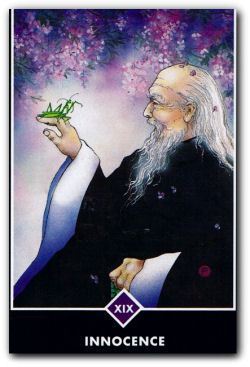
The monk in this card from the Osho Zen Tarot deck is demonstrating what I am talking about. He is totally engaged with the praying mantis on his finger. He is fully and deeply present in the moment, without prejudice.
And, he is clearly happy.
One mark of the state of innocence and bliss is a smile. It is getting the joke that my life is what I make of it, and is precisely how I define it.
In innocence, my experiences are devoid of meaning, (until I add them,) and there is no requirement that I do so!
I can “be” in my experience. (And the joke is, you are in your experience, whether you notice or not. This is the Zen of today’s article. You cannot escape your experience. Torturing yourself and suffering over your experience is a function of judgment and prejudice, and it entirely optional.)
I am “in” my experience; if I am awake to it, then whatever is going on is simply what is going on.
Life is incredibly short, and much of it is wasted in endless justifications for staying stuck in old thought patterns and habits. The old, old stuff is not removable. It’s just there. But, and here’s the key, it can be dealt with.
For instance, when you were four, there likely was an absolute rule that you were never, ever, to cross a street without holding an adult’s hand. I trust you’ve moved past that rule by now! Yet, that “life or death” rule is still in there, and likely no one ever told you specifically to disregard it. You outgrew it.
It is now time to outgrow all the crap you shovel that keeps you stuck and miserable.
Not by rooting it out or by getting someone’s permission to let it go. You outgrow it by acting in another way. Metaphorically, it is now up to you to look both ways before crossing, but to cross the damn street!
Growing up means letting go of childish things. Letting go of what is not working, by doing what does work. Having experiences because they are available to you. Having full body relationships because you want to. Having new thoughts and new experiences each and every moment. And this is only possible by being in the moment (you are anyway!) with attention and focus.
Do it, now. And enjoy the adventure! Even with tigers above and tigers below, the strawberry at hand is delicious!
The post Zen and Innocence appeared first on The Pathless Path.
Original article: Zen and Innocence. If you're reading this on another site, let me know...
January 24, 2017
Zen and Clarity
This is post 1 of 1 in the series “Zen Living and Being”
Synopsis: Zen and Clarity — learning to see clearly is key to creating peace and focus.
Of Wayne’s many books, the one closest to today’s topic is: Half Asleep in the Buddha Hall

The 2nd. edition of This Endless Moment is going to be released on time, meaning Feb. 1.
The new version has 60 plus more pages of insights and helps. Next issue, I’ll provide links to the paperback and e-book versions. Zen and Clarity
Zen and Clarity
I’m going to make a stab at a new series of articles about Zen, or, at least my peculiar twist on how a “Simple Presence” approach to life might be of use to you in these most turbulent times.
Zen tends to turn our understandings on their ear, by insisting on the reality of no reality
If you’ve read my book, This Endless Moment, you’ll remember that I wrote that the most important concept to ‘get’ is that there is no real reality. What this means is that stuff is happening – in the world, in our lives, and we grow, mature, and change. The stuff that is happening, however, has no meaning. It just is.
The way we interpret what is happening is entirely personal AND optional.
The process of interpreting ‘just happens’ as we observe the world around us. We perceive a ‘thing that is happening.’ Our natural process is then to ascribe a category to the thing we perceive. This is a good thing–we have, for example, a category for ‘hot’ things–like a glowing stove top. It’s great to know that this category applies to all glowing stove-tops.
Trouble comes when we take it a step further, and add in a meaning (an interpretation)
This is the realm of right and wrong, good and bad. Should. Shouldn’t. Again, the words themselves are not the issue. The issue is clinging.
The Buddha said that suffering is caused by clinging. By this, he meant that we get attached. The attachment is to the “rightness” of our view, and especially do we cling to the “wrongness” of the views of others.
And yet, the things we cling to are stories–they are not a part of the thing itself.
One of the first steps, then, in waking up, is to both understand and accept the essential meaninglessness of everything around us. Including the stories we tell ourselves.
This is tough, as we have a lot riding on being right. On being smart. On being “the one with the answers.” Our investment is made up of stories, and the stories we create back up the beliefs we’ve created.
Life discomfort comes when how we interpret events does not match what is actually happening ‘out there.’ And that begs the question: when I feel discomfort, do I blame ‘out there,’ or do I question my interpretation?
Here is how story-telling works: we see an event, and rather than stay cleanly engaged with the event per se, we start to run a script based upon stories we have told ourselves in the past.
For example, if I believe that I am incapable of having a meaningful and lasting relationship, this story will colour each and every transaction I have with my partner.
If I am not conscious that I have created this story, I will find myself doing two things:
noticing any event that supports my story, and
ignoring every instance the denies my story.
Or, I may believe that my role in life is to explain life to my partner or child – to ‘help’ them to ‘see the light.’
Now, if we are talking about a real child – say someone under 12 or so, then yes, our job as adults is to keep the child safe, fed, dry, housed and clothed. We are also responsible for socializing the child, so that he can fit in to the culture to which he belongs.
Where this falls off the rails is when parents continue to parent their adult kids – endlessly interfering with them. “You are not happy, and I have to fix you.” Or, one spouse decides their partner is ‘a child,’ and the ‘parent’ partner then engages in an endless tirade designed to get their partner to behave (to mind their “mommy.”)
All of this seems reasonable to the person doing this, because they think they know best for another. They are unwilling to deal with the actual person – they want the other person to shift so they can be comfortable. What’s odd about all of this is that the other person typically isn’t asking to be fixed! And you can’t fix another person anyway. It’s hard enough to fix ourselves.
Many people think that waking up is ‘about’ rooting out all that is ‘wrong.’ Typically, such people trap themselves into assigning blame. In other words, they are looking to figure out who to blame for their dilemma.
Parents typically get a lot of blame. “If only my parents had been different, had been better role models, had treated me differently.”
Partners, past and present, are also blamed. “Why doesn’t she understand? Why can’t he grow up and act right? If only I’d picked better.”
Of course, such reflections lead precisely nowhere. The reflections are based upon stories we tell ourselves, and not upon present reality.
Our first admission needs to be this:
Our memories are notoriously unreliable and self-serving. Our sub-conscious minds ‘selectively pull’ “memories” to support what we already believe! And even if the story we tell ourselves is essentially ‘true,’ (dad was a jerk and mom was an enabler, or whatever…) so what? Is knowing that likely to change anything in the here and now?
Who you are right now, is … wait for it … who you are right now. There is no way to change one iota of your past. You can’t get a better deal, can’t change your upbringing, nor can you change a single decision you ever made.
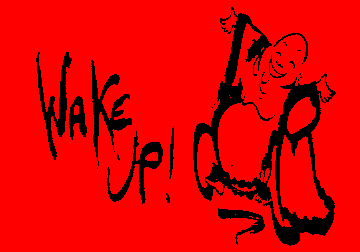
What you can do is wake up.
Waking up involves stepping out of the dream.
The dream is the story you tell yourself.
I’m abused.
I’m hard done by.
I’m a victim.
He is the jerk, I am the princess.
I have to get everyone to believe my side of the story.
Everyone hates me / is out to get me.
How people perceive me is important.
And on and on.
The dream is you, living on auto-pilot, repeating the same lame behaviour, day after day, decade after decade. And never, ever, accepting responsibility for your behaviour.
Waking up is seeing the game for what it is, and choosing, repeatedly, to walk another path.
In other words, rather than doing away with our stories (we can’t) we find new ways of thinking and being.
Now, for me, the Zen approach is best. This perspective is very much oriented toward being present without judgement and without preconceived notions. In other words, I engage with what is happening now, and in this way my behaviour is relevant.
When I take this approach, all that matters is what is going on in this moment. I choose to let go of the past – all of the ‘trying to fix things,’ all of the ‘assigning blame.’
In this moment, I can choose to see and hear and interact, or I can choose to let the situation or person go, for now or for forever. I can make that choice based upon where I am right now, as opposed to making the decision based upon the past.
I’ve been reading a book called Zen Body-Being, by Peter Ralston. I read a section last night that I loved:
“The success of our actions depends entirely on our ability to relate appropriately to what is actually occurring in this moment.”
And here’s the key:
“Notice that the principle is not based upon what we perceive or experience. This may not make sense unless we recognize that there is a discrepancy between our perception and what is occurring. In short, we can perceive something other than what is there, and fail to perceive what is actually there.” [p 151]
In other words, what we think is going on is just what we think is going on. It’s not what is actually going on.
I remember once, sitting with a couple. The woman told me at great length, and with sighs and tears, what her husband thought about the topic at hand. I asked her if she was interested in actually asking him what he thought, as he was sitting right next to her. It turned out that she was interested, and asked.
‘Strangely enough,’ he thought exactly the opposite of what she thought he thought! And she’d been mad at him for a week, because she ‘knew’ what he was thinking, and … well, you get the point.
We begin to move past all of this by getting our noses planted on our side of the fence. I do not know what Darbella is thinking, doing, wanting, desiring.
I can tell myself a story and interact with her as if my story is true. Or, I can ask her.
Guess which one works?
The post Zen and Clarity appeared first on The Pathless Path.
Original article: Zen and Clarity. If you're reading this on another site, let me know...
January 12, 2017
More on Being Present
Of Wayne’s many books, the one closest to today’s topic is: This Endless Moment
Just a reminder, I’m just a few weeks away from releasing the 2nd edition of This Endless Moment, my most popular book. The rewrite adds, 60 + pages! If you’d like to be kept informed, sign up for info at http://www.phoenixcentrepress.com/, then “like” my Phoenix Centre Press page!
More on Being Present. If you're reading this on another site, let me know...
January 4, 2017
Be Present –12 Ideas
Be Present –12 Ideas
Synopsis: Be Present –12 Ideas — I thought it might be nice to start 2017 with some ideas for being and staying present. Give the weird situations in the world, a little presence will go a long way.
Of Wayne’s many books, the one closest to today’s topic is: This Endless Moment
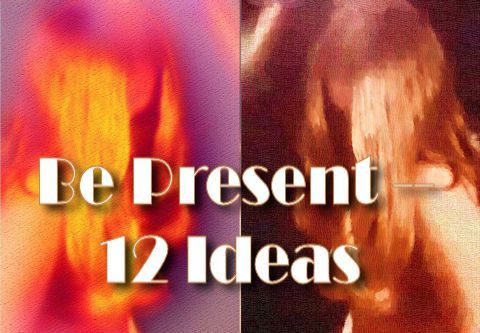
12.Appreciating Your Body’s Wisdom
11. Living Honestly
10. Embracing Movement
9. Committing Wholeheartedly
8. Putting Yourself First
7. Creating More Passion
6. Demystifying Sex
5. Changing Your Story
4. Being a Blessing
3. Honing your Loving
2. Getting on with it
1. Living in the Present, for a Change
12. Appreciating Your Body’s Wisdom
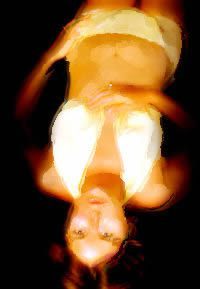
It’s time to reclaim the 95% of yourself that you minimize and disparage – your body.
Admit it, you’re living as a talking head, and hauling the rest of you around because you can’t figure out what else to do with your body.
I spend a lot of time with people who are in absolute denial about their bodies, and what their bodies want/need. I look and see tightness, discomfort, pain. I ask, “What’s up?” and I get a flood of stories from the past and the future.
The flood of stories focusses on stuff that has nothing at all to do with what is going on right now.
I suggest taking a breath (or several,) and then some focus on what’s going on below the neck. Both Breathwork and Bodywork help with this focus. If the person is willing to do either or both, I can almost guarantee that something immediate will happen.
The sighs and tears and anger and sadness — and the passion for life and for release — starts flowing to the surface. Things un-felt, repressed, buried under the weight of all of those… stories.
Push a little deeper, and the up-flow of emotions might cause a panicky retreat back into their heads. Because, after all, torturing ourselves with stories is “normal;” feeling fully takes both effort and courage.
Back when I used to teach workshops about all of this, I wold encourage more breathing. I wanted the person to choose to feel, and that requires a whole lot of no-thought.
If the person chooses to hold to the feeling while being present in their body, they learn to experience an easy flow of emotion… and a decided lessening of the drama they are creating.
But, boy is it hard to persuade people to go there. I decided long ago to simply offer my friends the opportunity to find presence through breath (and Bodywork) and then to just sit there to see what they choose.
Now is the time to commit to listening to the wisdom of your body. Stop running from yourself – running up into your head, where you lie to yourself and create more dysfunctional stories. In 2017, commit to dealing deeply and fully with your body. You’ll be glad you did.
11. Living Honestly

Be who you are
The idea of living honestly is one of the hardest “sells” on the planet. Mostly, people have a lot of excuses for not being honest, either with others or with themselves.
Some actually resent the whole “honesty” concept – they figure “adults have a right to privacy.” In other words, they see having secrets as part of being an adult.
Others think that if they are honest about who they are and what they are about, the people around them will run screaming from the room.
Living Honestly is a never-ending trip from self-discovery to self-reflection to self-revelation.
This process is emphatically not about discovering your faults and then making yourself miserable about them. Living Honestly all about digging in deeply, revealing (to self and others) the depths of yourself, and emphatically it’s about stopping lying to yourself about your inability to make better choices.
A noble goal for 2017 is to commit to telling the truth, gently, yet clearly, about yourself. (It’s not about blasting others about what you perceive as their truth – “You are such a jerk. You need to get over yourself.” That’s not your job!)
Your job is to learn about the depth and height of yourself, and to bring that person into full expression in the world. It’s about enacting more of yourself, by risking being who you are.
10. Embracing Movement

Movement and change is our only reality. As the Buddha reminded us, you cannot cling, for even one moment, to anything – a person, an experience, even a single breath. You cannot cling to your life – it is passing, and soon you will no longer be.
Movement and the passage of time are intrinsically linked. Once you see this, you will recognize that the pain and drama of our lives have nothing to do with what is happening right now. All of that pain comes from our fantasies that what is happening right now ought to be different.
As we have that thought, our brains get involved, and soon we are just sitting there, immobile, telling ourselves stories of past and/or future.
The way out is active participation in the present moment, emphasis on active. You incarnated (literally “came into flesh – carne”) to have a body, (i.e. to feel and to get around) and bodies need airing out, dancing, jumping, stretching and generally need to be in contact with other warm bodies. So, what are you doing to be present and in your body?
The lovely Darbella and I exercise, and we dance, and we hug, touch, and cuddle. We work (it is work) at being present with ourselves (the only place and person we can be present with) as often as we remember to.
The movement of life is the presence of life. In this flow, I am alive and aware. And that, my friends, is as good as it gets! In 2017, commit to a rigorous program of physical movement of some sort or another, and then be present with what your incarnation feels like.
9. Committing Wholeheartedly

This is a biggie.
Most people dick around with and chip away at life, as opposed to tackling life both wholeheartedly and whole-headedly.
For example, high-level wellness is something that is within each of our grasps; all it requires is taking ourselves seriously by acting differently. Sadly, wellness is not a goal most sign on for, because of the effort involved.
Back in September, Dar and I committed to one hour of vigorous exercise 4 times a week. We’re mostly sticking to it, even with travel. Let me tell ya, exercising in Costa Rica in the heat is a “trip,” and we’ve both come out of sessions nauseous.
And back we go, because… commitment.
A major way to screw up getting somewhere on our life path is to choose to do only enough to mitigate pain, as opposed to pushing through the pain to see what lies beyond it.
Relationships suffer from seeking “no pain.” People think, “No pain, no problem.” But everything always changes – and then the relationship goes south – because only the “minimal effort to maintain the status quo” was applied.
One of things I notice as I and my friends age is how often people only work on themselves after “the damage is done.” This is because it is “easier” to reset one’s pain thermostat to “bearable,” as opposed to transforming themselves. The older we get, the more entrenched we can become, if that’s what we choose.
I’d suggest that wholehearted commitment is necessary for a fulfilled and fulfilling life. Dabbling, playing-at-life, flitting about while time passes and life goes by, seems to me the ultimate in wasting one’s life.
Yet, many are the excuses. And you are never any better than your best excuse.
Dear hearts, get over it! In 2017, commit to something spectacular, and make it happen. You do not have forever.
8. Putting Yourself First
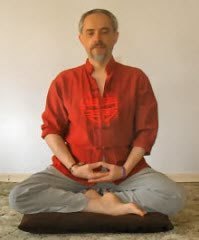
No, it’s not selfish to put yourself first. I’m not talking about steam-rolling over others. I’m talking about taking your self, your life, and your path with the utmost seriousness.
Many people dedicate their lives to others, and not in a good way. Most engage in an, “If I treat them well, they’ll treat me well” game that never plays out. Why?
When you make it your mission to live for another, all you create it the expectation that you will do this forever. It does not engender reciprocity. It engenders dependence and expectations – demands – for more and better from you.
Any one who accuses you of selfishness is saying, “Hey! Wait a minute! You are supposed to put me first! How dare you think of yourself and not of me?” In other words, they are doing (being selfish) what they are accusing you of!
The only way your life will ever be other than it is, is when you do something differently. Period. Anything else is a fluke. You can’t change your life, your prospects, your relationships, your body, without changing something – wishing does not make it happen.
When is the right time for you???
Right now, of course!!
7. Creating More Passion
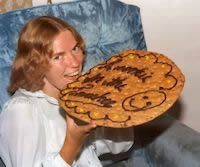
Passion is the burning, internal fire of purpose. Passion is a path of self-development – this fire is what drives us to go deeper – to become more of who we actually are. Passion is all about desire focused on a goal and in a direction.
Other stuff (people, places, things) does not create passion in us. Passion is an inside job. This is why we can be passionate about someone or some thing at one point, and not passionate in the next breath.
Passion feels hot and chargy. Thus, it is a prime mover and motivator – so long as we do not attach to or get hooked on the feeling. If we do, we become passion junkies, and the only goal is “more passion.”
The form of passion that is helpful is passionate direction. For enlightenment. For a noble goal or cause. For more depth of self-knowing and for more depth in relationship.
This kind of passionate acting is actually a path.
In 2017, create some passion for yourself. Don’t put it off. Passion is the power that primes the pump of life!
The other 6 “ideas” next issue!
div.wpob_template_main.wpob_template_main_1{display: none;}
.wpob_template_main_1{
background-color: #fff;
max-width: 750px;
height: 310px;
border-width: 7px;
border-color: #ccc;
margin-top: ;
margin-bottom: ;
margin-left: ;
margin-right: ;
}
.wpob_template_main_1 .wpob_box_heading{
background-color: #8f0a0b;
}
.wpob_template_main_1 .wpob_box_heading_text{
font-family: 'Shadows Into Light', serif;
font-size: 24px;
line-height: 40px;
color: #fff;
text-align: center;
text-transform: uppercase;
font-weight: 900;
margin: 0;
}
.wpob_template_main_1 .wpob_box_media_container{
display: inline-block;
width: 120px;
height: 164px;
}
.wpob_template_main_1 .wpob_box_content_container{
}
.wpob_template_main_1 input.wpob_input_fields{
width: 200px;
line-height: 36px;
margin-bottom: 5px;
border: 1px #ddd solid;
vertical-align: middle;
font-size: 16px;
color: #999;
font-size: Arial;
padding: 0px 8px;
}
.wpob_template_main_1 .wpob_box_image{
width: 100%;
height: 100%;
}
.wpob_template_main_1 .wpob_box_media_center{
display: block;
margin: 0 auto;
padding: 10px;
}
.wpob_template_main_1 .wpob_box_media_right{
float: right;
padding: 10px 0px 10px 20px;
}
.wpob_template_main_1 .wpob_box_media_left{
float: left;
padding: 10px 20px 10px 0px;
}
.wpob_template_main_1 .wpob_box_content{
font-family: Fjalla One;
font-size: 18px;
line-height: 24px;
color: #333;
text-align: center;
padding: 1em;
}
.wpob_template_main_1 .wpob_box_button_div{
text-align: center;
padding: 0em 1em 1em 1em;
}
.wpob_template_main_1 .wpob_box_button_div a.wpob_box_button, .wpob_template_main_1 .wpob_box_button_div button.wpob_box_button{
font-family: Georgia;
font-size: 18px;
color: #fff;
background-color: #0c8442;
border-radius: 5px;
width: ;
padding: 10px 15px;
}
.wpob_button_gradient{background-image : -moz-linear-gradient(top, #0c8442, #057538);background-image : -ms-linear-gradient(top, #0c8442, #057538);background-image : -webkit-gradient(linear, #0c8442, #057538);background-image : -webkit-linear-gradient(top, #0c8442, #057538);background-image : -o-linear-gradient(top, #0c8442, #057538);background-image : linear-gradient(top, #0c8442, #057538);filter : progid:DXImageTransform.Microsoft.gradient(startColorstr="#0c8442", endColorstr="#057538", GradientType=0);border-color : +#0c8442 #057538 #057538;background-color : #0c8442;}
A Shameless Bribe!!
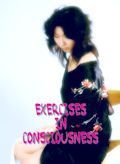
Receive The Pathless Path by e-mail!
As a thank-you, we'll send you a link to our pdf booklet, Exercises in Consciousness.
What could be better than that??
Cick and Join Us!
The post Be Present –12 Ideas appeared first on The Pathless Path.
Original article: Be Present –12 Ideas. If you're reading this on another site, let me know...



